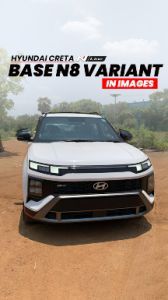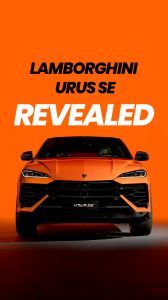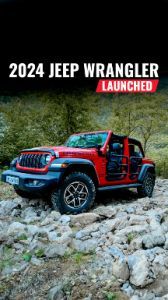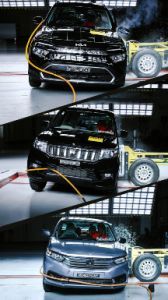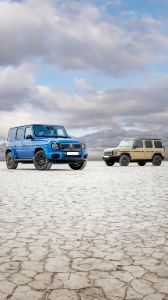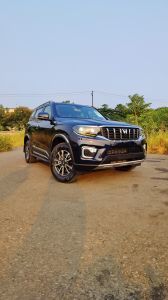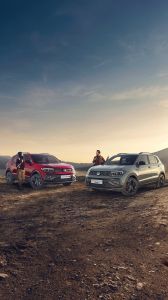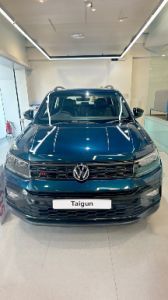 In 8 Pics: Volkswagen Taigun GT Plus Sport Detailed
In 8 Pics: Volkswagen Taigun GT Plus Sport Detailed
Ducati 1199 Panigale: First Ride
- Mar 14, 2012
- Views : 54926
- 21 min read
Our first impressions of the exotic and radically new Ducati 1199 Panigale straight from the Yas Marina Circuit in Abu Dhabi
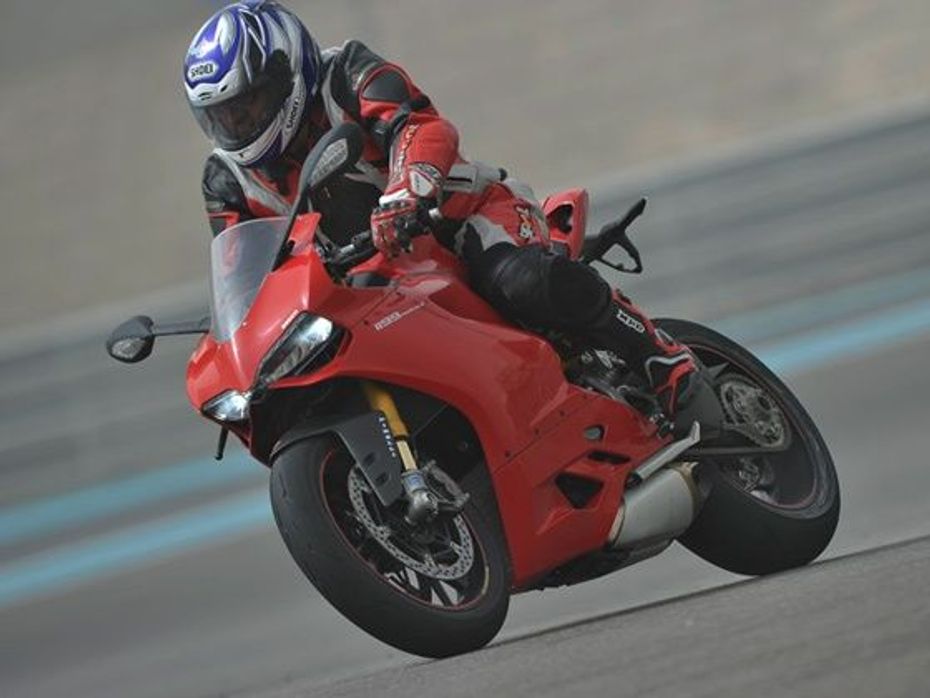
The trickiest part of the Yas Marina circuit for me was the blind uphill brow turning right coming out of pit lane and when tucked behind the tiny windscreen of the 1199 Panigale, there was no other way but to sit up and try and make a slow exit out of it before wringing that right wrist and hoping to ensure that the front end didn’t launch me to the stars! I needn’t have worried for the clever electronics and working in conjunction with the mechanical slipper clutch and the quick shifter mechanism was enough for the throttle to progressively lay down the ample 195 thoroughbred horses in easy manner and yet have the tacho blitzing its way over and above 11,000rpm! Yes, the new Superquadro (Italian for the large bore - short stroke cylinder dimensions) engine is truly one of the world’s most outstanding motors ever built and even though it yet marries the classic 90-degree Ducati vee-tradition along with the legendary desmodromic valve actuation system pioneered by Dr Fabio Taglioni, everything else about the motor and also the bike it powers is completely new and revolutionary.
The Yas Marina circuit was never built for motorcycles and while it has a great setting and spectacular vistas all around it while also some challenging corners, this mix of Monaco (section through the Marina), scary Macau (solid cement walls), kerb-lined fast flowing Jerez sweepers and a few wide painted blue and red run-off areas like Paul Ricard, is a real handful for fast motorcycles, and no wonder then that this was the first time a motorcycle event was held on what is truly an F1 circuit. The cars can be thrown from line to line in a jiffy but for the bikes they would always have to adhere to the ideal racing line and a slight mistake could land them into a hard wall or way of course. Making the mix even more heady was an atrociously aggressive wind which was blowing across the 1.2km long main straight with the central kink in it and on the racing line and just before heading to the braking area, if you weren’t careful the wind could blow you off line by as much as five to seven feet! It happened to quite a few of us but what really saved the blushes was how the 1199 Panigale behaved to make its pilots come out smelling like roses!
Out of turn one and heading out to the spectacular turn 2, the snappy acceleration as I shift into fourth is arm wrenching but with the sublime mass centralisation of the entire package, the simple expedient is to go as flat as you can on to the tank and the bike grips but continues to pull hard, both wheels firmly glued to the tarmac and now with even greater control but also with massively developing velocity! If that’s not all, the nimble ability of the bike as you just will it into turns rather than labour and heave to change direction is mind numbing in its effect. This is unlike any Ducati from the past where the easy way of the vee-twin speeding up was always so very predictable but on this bike the revs come on so strong yet so creamy and linear that the sensation of speed is heightened, more so considering the fact that the aerodynamics have been superbly sorted out. One can redline the motor more often than not in any of the top four cogs and even then maintain far more torque than ever before so that you rush out on to the straights with speeds in excess of 260km/h (Troy Bayliss, Neil Hodgson and Vittoriano Guareschi were nudging 290km/h!), the feeling is surreal as the bike wants to do more, much more!
All too soon you are at the braking marker for the left/right flick and as you go down the box, the clever electronics take over. The throttle butterflies in the Mitsubishi fuel injection system open when you back off the gas allowing air to bleed into the cylinders, thereby reducing compression and mitigating the effects of harsh engine braking. If that is not all, the 1199 Panigale’s rich roster of electronic bike aids further lends itself to making heroes out of amateur magazine riders and the EBC (electronic brake control system) working in tandem with the mechanical slipper clutch helped in making a smooth entry into the left hander and then picking up the bike so effortlessly to lean right into the following turn. Two things stood out for me, the first being the fact that even in excess of 11,500rpm when hard on the gas while on the straight, the ability of the motor and its transmission system to get down to near crawling pace was executed smoothly and without savagery and when one rode it like in an urban environment, in sixth, the bike could trundle along with nary a snatch or jerk! Amazing power delivery allied to great manners was what marked the engine and I had yet to run the full lap!
Another short sweeping back straight beckons and till now I always thought about grip and mass centralisation and great power delivery but the infield section form turn 12 onwards shows where the new Ducati really excels – in the way it steers! The mind was all about how planted the bike felt even with the fine sandy desert sand being blown on to the circuit by the strong gusty winds and this in turn made me marvel at the grippy 200-section Pirelli Diablo Super Corsa SP tyres with their unique dual compound construction (developed from the tyres used in the 2011 World Superstock championship race series). But this was nothing compared to the manner in which just a slight weight transfer and the bike could change direction without scaring the life of yours truly. In fact, because of its ability to try and lift the front wheel off the ground under hard acceleration (it happened even when giving it the absolute right hand treatment when shifting from second to third in the early laps), one felt the front end was light and vague but once I got more laps under the belt, the manner in which you could harness all the attributes – physical, electrical and mechanical – of the 1199 into one seamless progression was something to revel in.
Coming to the infield corners in the hotel section, I was afraid lest I lose the front end first because the Brembos gave me a fright! With their new monobloc design calipers hitting the anchors up front almost caused to me flip up and over but shift down the box and the slipper clutch plus the electronic engine braking were great allies to control not just the physical forces induced on oneself but also to help effect great bike control. Tipping the bike smoothly into the turn and then flicking it back up and powering it on is a delight, and the term I used, just willing it on, is pretty apt. What helps though is also that Ducati have acted to make the 1199 acceptable to a wider section of riders with differing skill levels but it is a fact of life that this doesn’t the disguise the main aim of making it a potent racer which is also a commendable road going tool! The riding position, adjustable for both track and street use, is key and the slightly higher placed but wider clip on handlebars working in conjunction with the slightly raised seat (for all out track attack) and that superbly crafted tank covers to tuck in those legs and also to get right down to the tank help give both control and ease of movement. The new cast aluminium chassis-engine-frame combo has also helped to shift the riding position a good three inches forward making for a slightly more upright stance which in itself has also helped in not getting the arms too outstretched thus making for better control without tiring out the rider. Maybe the only negative I could think of was the fact that the bubble could have been a bit more pronounced but then it would have shaded the aesthetics and also disturbed the air flow!
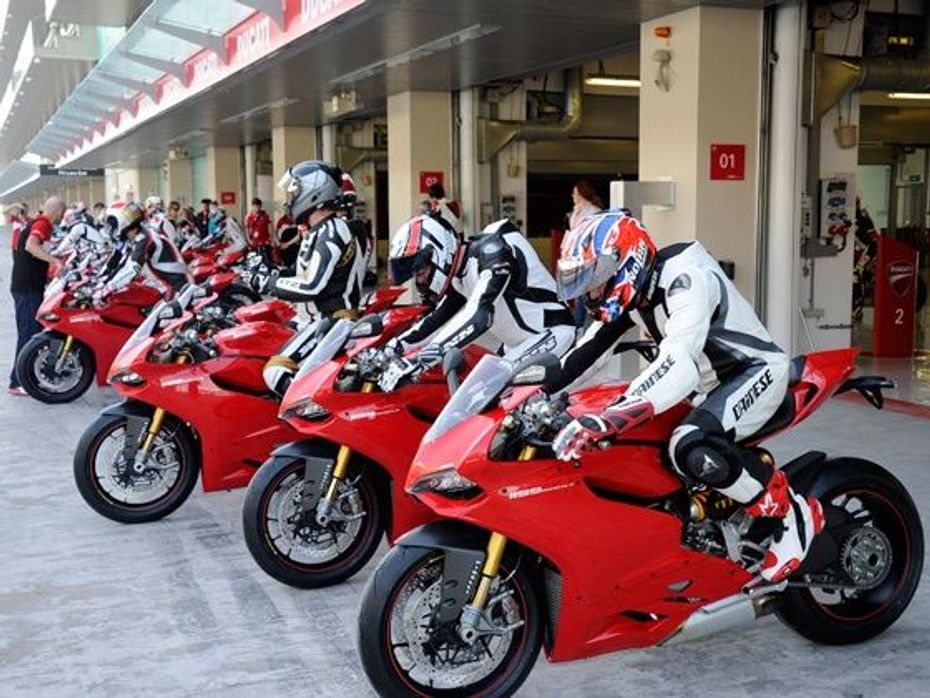
Redefining the brand, remaking the marque, pushing the envelope are all fine phrases, which have been abused more often than brought into meaningful practice, but one ride aboard the 1199 Panigale and you know that Ducati has truly elevated superbike genre to another level altogether. This is nothing new for the Bologna bike maker but earlier it was all about small but telling increments which pushed the red machines further and further ahead of not just the competition but also the rule makers in the WSB series. Ducati goes racing because it is intrinsic to the brand and therefore its superbikes are its ultimate brand shapers while also doubling as the biggest profit generators so the need to evolve remains paramount within the small team at the Borgo Panigale works.
While this magazine has written an in-depth feature of the make-up of the 1199 Panigale earlier (refer our 2011 issue), the chance to be aboard the spanking new machine came with a call to attend the global launch and ride session of the bike at the spanking new (if it could be called that!) and very spectacular Yas Marina circuit at Abu Dhabi. While I have ridden many a Ducati in the past and have one on order right now, it would have been foolhardy of yours truly to have passed on this gilt edged opportunity to swing a leg aboard the latest two-wheeled missile from Italy. What was of interest to me wasn’t just the performance (this has to be a given with a machine painted red, be it with four or two wheels) but the fact that Ducati had gone way beyond many others in rethinking the mantra of power-to-weight and coming up with ingenious technological solutions on this front.
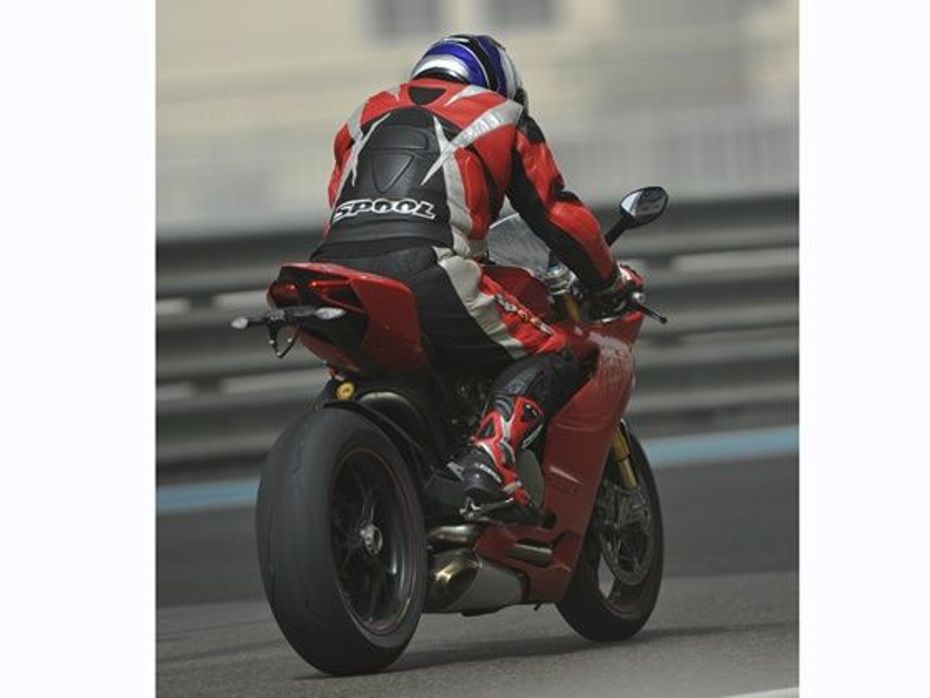
There were just two obvious points of reference set by Ducati boss Claudio Domenicali to the team which began work on the next generation Ducati superbike in late 2007, yes that’s how far back the 1199 project began and while the world may have seen the 1098 and the 1198, compared to them the 1199 is a completely different animal in build, character and delight. The first aspect was to shed weight by around ten kilogrammes and the other was to bump up the power and torque produced at the crank by at least 10bhp. The latter was easier done and also exceeded upon by a whopping 15 genuine stallions but lopping off ten kilos taxed the design and engineering teams immensely. However, the results on paper were already there in the public domain, 195bhp, 132Nm and 164kg (dry), easily seeing off the likes of the BMW S1000RR and the Aprilia RSV4 which are the closest rivals to the Ducati. However, it is one thing to look at these two four-cylinder machines and quite another to marvel at the Ducati retaining its trademark vee-twin configuration and then the above mentioned numbers suddenly hit home with even more ferocity!
The sheer numbers were daunting no doubt, and while I had driven and been driven on the Yas Marina circuit, the butterflies were quite evident in the stomach as I boarded the flight from Mumbai to Abu Dhabi. On top of that once I reached the circuit I came to know that the man who would be giving us riding lessons around the circuit was going to be none other than Vittoriano Guareschi, former WSB and MotoGP rider and presently the MotoGP team boss of Ducati Corse! It was the last day of the world launch and so Guareschi was drafted in but on the two earlier days one had none other than the genial multi-time WSB champion and MotoGP race winner Troy Bayliss play this role!
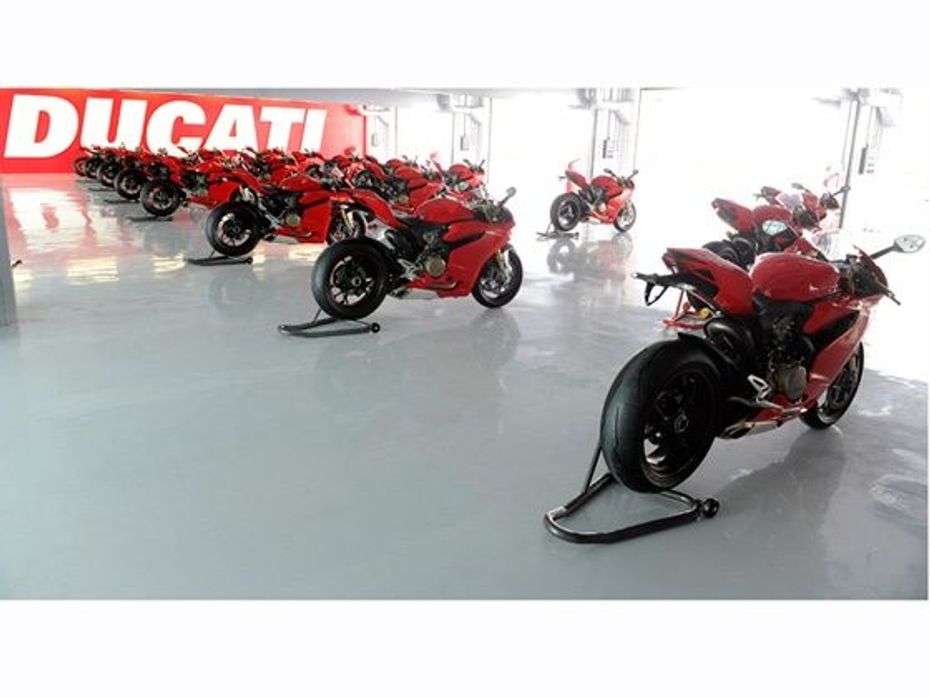
the automobile community
What struck me the moment I set eyes on the 1199 was how compact the bike is! Much has been said about the 800cc era MotoGP bikes being 250cc-sized with power from out of this planet but here was a road-going machine the size of a 250cc twin but with MotoGP levels of power on call! To put things into perspective for India, take into account the spanking new Bajaj Pulsar 200NS which itself sets new reference points for Indian bikes in the power-to-weight stakes and then compare it to what the 1199 Panigale packs in! Yes, the comparo is just not on but when you see what happens with 1200cc of engine displacement – almost a litre plus over the Pulsar but with only about 20kg more and with a top whack in the region of 290km/h and a zero to 100km/h time in warp speeds, you know that the new terms of reference from a bike have been upped to dizzy new levels!
The 1199 looks great and I think is the bike which comes closest to the iconic 916 penned by the great Massimo Tamburini. The 916 redrew the basic face of sleekly styled superbikes and while there had been iterations of the same, none of the lot which followed could have been said to have moved the game forward while retaining the aesthetic balance. The 1199 does that and so very effectively as well. It is the most pleasingly styled superbike and credit must be given to Gianandrea Fabbro for his exquisite lines. There is sheer poetry in the overall lines of the bike, its stance, its details and that great form and proportion which makes the 1199 Panigale a new standard even on the aesthetic front. It is always very difficult to improve on a classic but finally there has been a move on from Tamburini’s masterpiece. The 1199 breaks new ground by being the first motorcycle in the world to feature LED headlamps and tail lights, stunningly wrought into those gorgeous lines. The attention to detail is something else again and while I don’t know about the others but I did feel that the control levers seemed low rent on a bike which otherwise seemed like a million bucks!
However, anything Italian and red has to do with engines and this is the case with the 119 Panigale as well. However in this new Ducati, there is another message and that is to make the package do the talking rather than just the engine make the music! And therefore the engine is also at the core of the superstructure that is made up of four distinct elements.
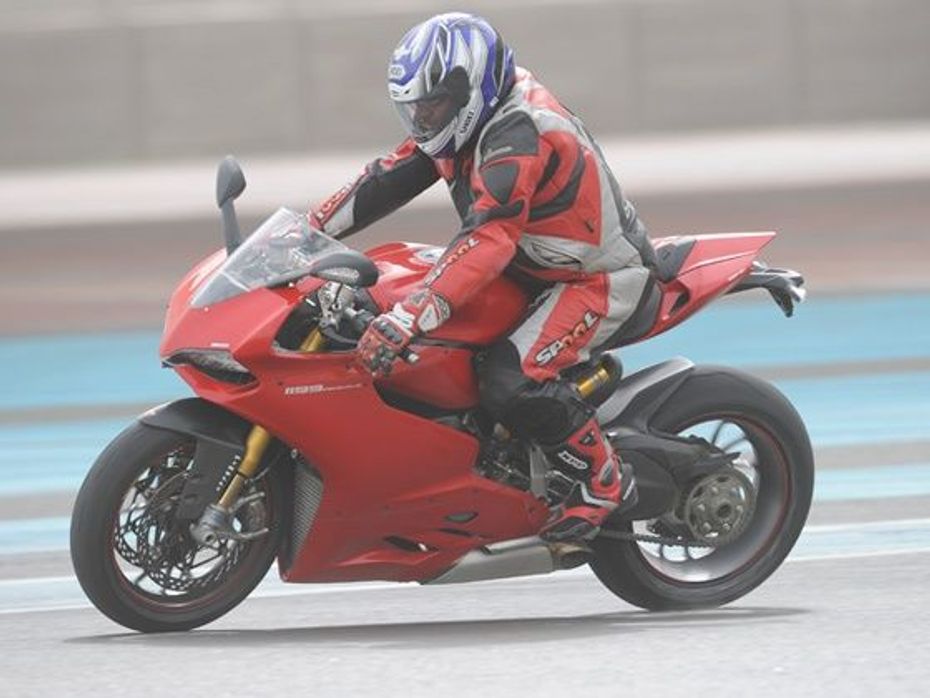
Beginning with magnesium-alloy front sub-frame (weighing just 900 grammes) on which is mounted the fully configurable multi-function TFT-display instrument panel and also the mount for the nose fairing. This magnesium sub-frame is then hooked up to the cast aluminium alloy monocoque section, which embraces the headstock and also doubles up as the large airbox. This unit which clamps on to the top of the rear cylinder head and the bottom of the front cylinder head, weighs in at just 4.2kg and it is then bolted to the vee-twin motor at the top end. Moving further back there is another very minimal cast aluminium alloy sub-frame (just 2.1kg in weight) to take in the seat and the carrier mounts. This mounts on to the top of the rear cylinder and onto the integrated cylinder block cum crankcase making for a super-economic design. The front suspension is by way of new design fully pressurised Marzocchi front forks which are fully adjustable and feature 50mm dia hard anodised aluminium sliders – a first for superbikes. In addition to this the designers have managed to lop off another kilogramme in weight from the units used on the 1198. These forks feature sealed and pressurised cartridges in which oils of two different viscosities are employed to deliver consistent uniformity of performance over the operating spectrum.
The rear suspension is made up of a singleton aluminium Sachs shock absorber with a piggyback reservoir. This aluminium unit and its mount is a veritable work of art and even though it is slung on to the left, it works brilliantly thanks to the electronic controls packaged into the bike’s gizmo package. The unique adjustable linkage for road use with an optional pillion helps in giving a progressive feel while tackling the twisties but in full out race mode, it helps deliver a slightly flatter ride characteristic and has come straight out of Ducati’s WSB race efforts. Who says competition doesn’t improve the breed in these times?
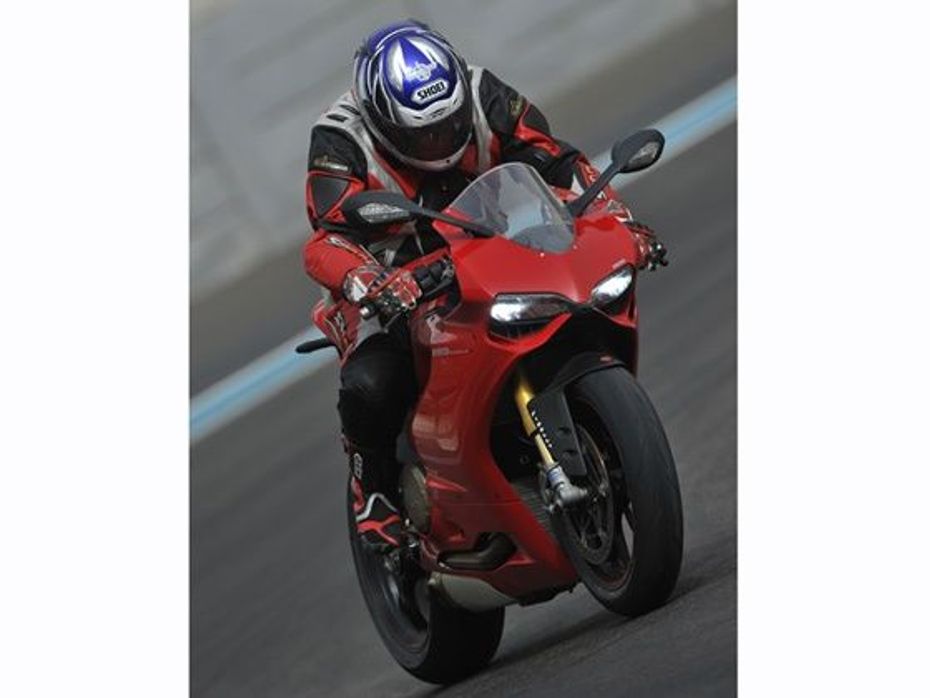
Retardation is not just by means of the electronically controlled engine tweakery but the all-new Brembo Monobloc M50 calipers work their magic on massive 330mm dia rotors to bring the Panigale to a halt. Ducati impressed all its ancillary suppliers to push the envelope on not just to excel in their own specialist areas of excellence but also to try and pare off weight as far as possible. The new Brembos were mentioned of as having worked on this count to reduce weight by 7 per cent. If that is not all the 1199 Panigale also benefits from the adoption of the latest Bosch 2-channel 4-sensor ABS system that has been integrated to work with all the Riding Modes. To be honest I never saw or felt the ABS come on and not that I wasn’t trying but just that the weight distribution and the balance of the bike was so good and the basic Brembo set-up plus the EBC was spot on.
I also happened to ride the hotter Panigale S which came equipped with the loaded on tech fully electronic Ohlins NIX30mm front forks and the TTX36 fully adjustable for both rebound and compression damping. These two settings are already factored into the motor’s ECU which has three riding modes – Race, Sport and Wet and apart from the electronic adjustability, the suspension could also be tweaked manually for ride height and preload as per the rider’s preference.
Getting down to the art of the heart though is where this Ducati shows off best and the new Superquadro motor is brilliance personified! First off the ingenuity of the engine’s design is another aspect where strength and structural integrity have been melded together to get both with a corresponding reduction in weight. The overtly aggressive large bore – short stroke is one of the highlights of this 1199cc displacement vee-twin with the cylinder dimensions measuring 112.0mm x 60.8mm. The engine has a full ride-by-wire control set-up and induction is by means of two 67.5mm dia equivalent oval shaped throttle bodies, which incorporate twin injectors per unit.
The tiny but large pistons – possibly the largest ever on a high performance motorcycle (now don’t get the Suzuki Intruder into the business because even though it also has a 112mm dia piston bore, it plugs away at a lazy 6200rpm to make 128PS of power and 160Nm of long legged torque at an even more sedate 3200rpm) have been derived from WSB and are made in a double ribbed design using RR58 alloy as the material of choice. Nikasil-coated wet liners are pressed into the magnesium alloy crankcase cum sump and the same material is also used for the cylinder heads and clutch cover. A good detail on the bike is an innovative decompression device working on both cylinder heads to ease engine pressure while starting. Much work on weight reduction and longevity has been done within the engine itself as well, a case in point being the titanium inlet valves and the techno-polymer gears for the oil and water pump drives.
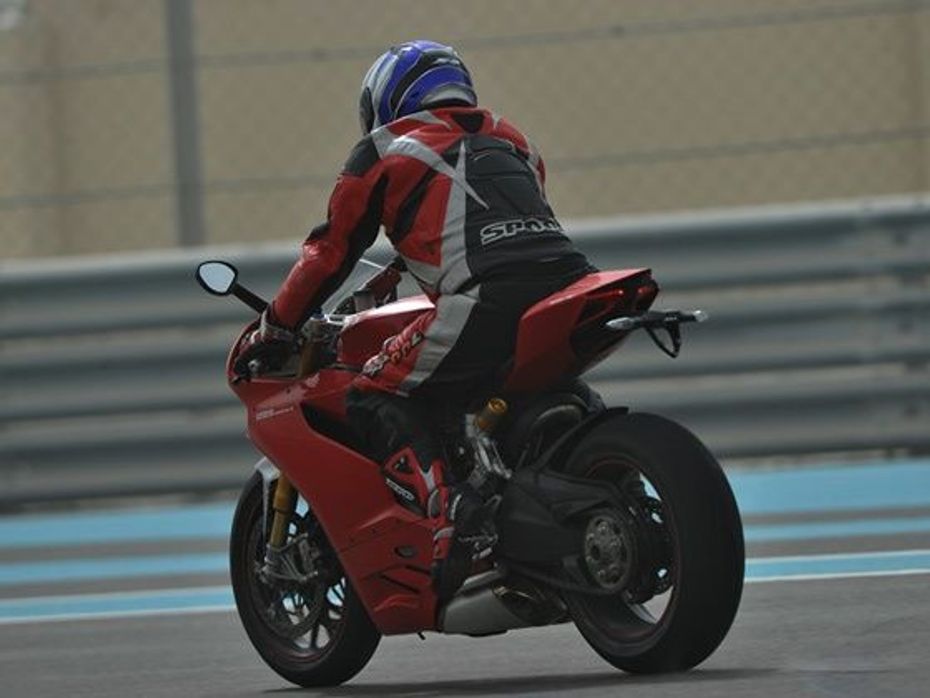
One of the key elements in the new motor is the all-new six-speed gearbox and the adoption of a wet clutch. The packaging of the six-speed cluster is another art form and while continuing the engineering aesthete, also do look at the under-engine exhausts which has helped in maintain a form and balance plus also of course the mass centralisation. The 1198 with its twin upswept under-seat exhausts had raised the weight higher thanks to the large cat cons within them but on the 1199 Panigale this has been addressed with a very attractive and beneficial packaging solution which pays off in the bike’s overall dynamics.
Clever electronics abound in quite a maze on the bike but first let's decipher the three riding modes that can be switched on from the handlebars using a switch to scroll through the TFT instrument console and tailor it to individual preference. The first mode is Sport whereby you get the full complement of all the thoroughbred Italian horses to gallop but with a smoother power delivery. In this mode the suspension settings are easy, the traction control working with more than an eye on the vital parameters to help you stay out of trouble, front and rear ABS activation with enhanced rear wheel lift intervention, ditto for the electronic engine braking system and the quickshifter on.
From here one moves to the full Race mode where the throttle response is even more direct, the suspension settings are all track configured and slightly on the stiffer side, the traction control is reduced massively, the ABS works only on the front wheel, the electronic engine braking is curtailed drastically while the quickshifter stays firmly on. The bike in this mode was unbelievable and on the two laps I rode it in this mode, were frankly some of the hairiest I have ever ridden. Not to mention the fact that I was slower around the Yas Marina while riding in Race mode than I was in Sport mode! Of course with each and every session I was enjoying the bike more and more and was able to ride harder every time I ventured forth on to the circuit and this is the true measure of any bike as you learn so you unravel what makes it tick and how to get the bets out of it.
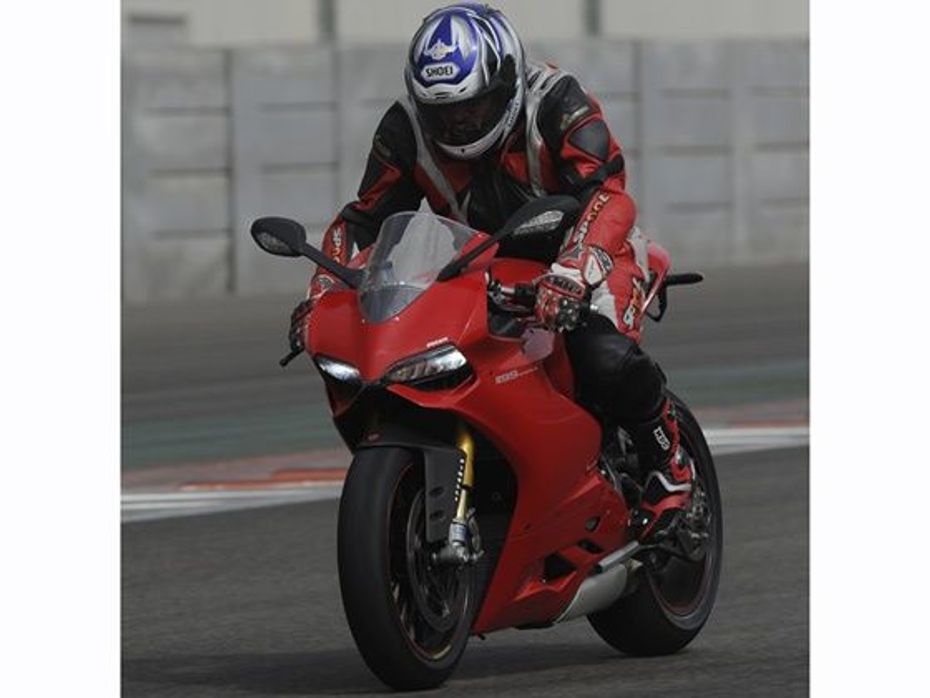
The third mode is Wet where the power is cut to 120 horses, the suspension is tuned to a soft setting while the throttle response is tailored for a mellow power delivery. Traction control is now in its element as is full ABS performance along with the electronic engine braking cranked up to its maximum.
Now let's get to the things that delight those who depend on us to try and separate hype from reality and this time round the hype surrounding the bike is indeed the reality! The bike makes 195bhp at 10,750rpm but can be redlined to 12,000rpm! What is amazing is that the mean effective piston speeds are so much higher that there should never have been the smoothness in the power delivery but the electronics have made this an awesome motor to use across the operating spectrum. The 1198 was all about massive torque at the low and mid-range but the 1199 is so different.
It yet makes for great bag loads of torque at the lower end of the rev range but it is smooth and so delightful even at part throttle in top gear. In fact, at times it feels as if there is just not enough power as claimed but that thought process is dispelled instantly once the bike sees an open expanse of road and then one is whooping in delight! On the long Yas Marina straight the likes of Bayliss and Guareschi were hitting somewhere in the region of about 290km/h and I am sure that the zero to 100km/h time is going to be the best there is among the present crop of superbikes. Heck, it makes the Aprilia and the BMW as well as the new MV look inferior and that too by doing more from less! For the record it makes 132Nm of torque at 9000rpm and this clear balance of torque and power packaged into a small structure with brilliant 52:48 per weight distribution front to rear makes for a package, which is mega. Just think about it, this bike has more grunt, more shove, less mass and isn’t daunting to even the novice. Get a decent rider on board and she is a rocketship! And that’s what I meant when I said: real racers only need apply, for combat duty!
Ducati Hypermotard 939 Video Review
See what our community has to say! NEW
India's largest automotive community







